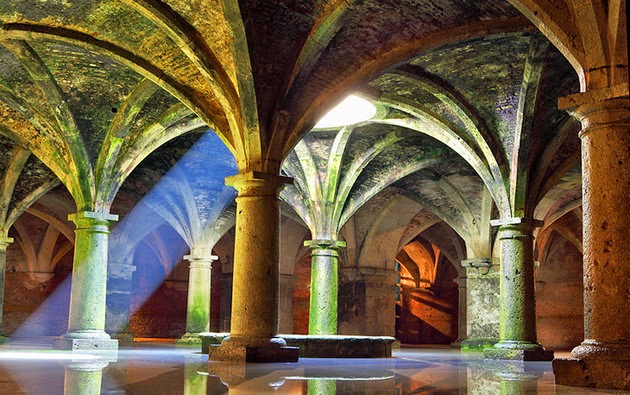Home to Morocco's primary international airport, Casablanca is the
main gateway into the country for many visitors, and often their first
taste of the country. This city is an industry and business powerhouse,
and compared to the exotic charms of Marrakesh and Fes it can't compete. There is a European touch to much of its architecture, and the city has a modern swagger that is unseen in other parts of the country.
Although Casablanca's tourist sights and attractions may not be as obvious as those elsewhere, you will find some gems if you dig a little deeper. The Medina district is a charming area and much smaller (and easier to navigate) than those elsewhere. And the colossal Hassan II Mosque is top of the list on most sightseeing checklists.
You can visit this city in our tour Spain & Morocco of 10days / nights
Although Casablanca's tourist sights and attractions may not be as obvious as those elsewhere, you will find some gems if you dig a little deeper. The Medina district is a charming area and much smaller (and easier to navigate) than those elsewhere. And the colossal Hassan II Mosque is top of the list on most sightseeing checklists.
You can visit this city in our tour Spain & Morocco of 10days / nights
1 Hassan II Mosque
On the shoreline, just beyond the northern tip of Casablanca's Medina (Old City), the Hassan II mosque
dominates the entire city. Finished in 1993, it is the second largest
mosque in the world, covering 2 ha in size with the world's tallest
minaret (200 m high). The prayer hall can accommodate 25,000 worshippers
while the courtyard (which boasts a retractable roof) can fit another
80,000.
Astonishingly intricate decoration covers every centimetre of surface.
The location, situated right on the tip of the rocky bay above the ocean, is thoroughly dramatic. Non-Muslims can visit the mosque on guided tours, which begin at the mosque's western entrance several times per day.
Astonishingly intricate decoration covers every centimetre of surface.
The location, situated right on the tip of the rocky bay above the ocean, is thoroughly dramatic. Non-Muslims can visit the mosque on guided tours, which begin at the mosque's western entrance several times per day.
2 Medina
Although Casablanca's Old City district may not have as much exotic
atmosphere as the Medina's of Fes and Marrakesh, the maze-like tumble of
alleyways still hides much to discover.
Authentic tradesmen sell their wares to shoppers with the butcher, the baker and candlestick maker all accounted for. It's a rambling and ramshackle neighbourhood with an authentic residential feel, and a great place to feel the pulse of Casablanca life.
There are also a some interesting holy men koubba's (shrines) in the Medina's southern section.
Authentic tradesmen sell their wares to shoppers with the butcher, the baker and candlestick maker all accounted for. It's a rambling and ramshackle neighbourhood with an authentic residential feel, and a great place to feel the pulse of Casablanca life.
There are also a some interesting holy men koubba's (shrines) in the Medina's southern section.
3 Place Mohamed V
Place Mohamed V is the central plaza of Casablanca. It is home
to many of the city's important official buildings, including the main
post office, Palace of Justice, Prefecture, French Consulate and the
main Bank of Morocco. The building facades all sport the neo-Moorish
style that French Resident-General Lyautey planned out for the city as
he set about modernising Casablanca in the early 20th century. The
square has a central fountain and well-tended gardens. During the
evenings, it is a local favourite spot for promenading.
4 Corniche
Casablanca's Corniche (beachfront district) is the city's
vortex for those who want to see-and-be-seen. Much of the shoreline is
now home to luxury hotels and restaurants. During the day, the many
beach clubs here do a roaring trade with sun worshippers lapping up the
rays and splashing in the club swimming pools. Further along the
shoreline is the public beach.
5 Cathedral du Sacre Coeur
This graceful cathedral was built in the 1930s and its
architecture is a harmonious blend of both European and Moroccan style.
It's unfortunately been left to whither in the past few decades, and is now in need of serious restoration.
But even in its current dilapidated state, the structure is still beautiful. Nearby is the Cathedral of Notre Dame de Lourdes, which is lit by a vast stained glass window covering more than 800 sq m.
It's unfortunately been left to whither in the past few decades, and is now in need of serious restoration.
But even in its current dilapidated state, the structure is still beautiful. Nearby is the Cathedral of Notre Dame de Lourdes, which is lit by a vast stained glass window covering more than 800 sq m.
6 Central Market
Casablanca's bustling central market is a must for tourists
who want to throw themselves into the midst of city life.
Right in the city centre, this is where locals come to buy and sell - be it housewives bartering for vegetables or grocers yelling out their special deals. It's a great opportunity for photographers and great fun for everyone else.
You'll find everything here from plastic bowls to Morocco's famous slippers.
Right in the city centre, this is where locals come to buy and sell - be it housewives bartering for vegetables or grocers yelling out their special deals. It's a great opportunity for photographers and great fun for everyone else.
You'll find everything here from plastic bowls to Morocco's famous slippers.
Location: Rue Allal Ben Abdallah
7 Mohammedia
This sleepy seaside city offers some fine beaches, and is a
relaxing alternative to staying in Casablanca. Although home to
Morocco's second largest port, Mohammedia and its tranquil charms
haven't been affected by the industry. The little Medina is a
delight to wander through, while the New Town area is attractively laid
out with grand, palm-tree lined boulevards. On the coast, it's all about
the beach. Cafes and restaurants here bustle with activity on summer
weekends when half of Casablanca seems to escape to Mohammedia's sand.
Location: 28 km north of Casablanca
8 Safi
Safi has been an important port since Roman times, but it was the Almohade rulers who surrounded the city with grand ramparts
and made it an intellectual and spiritual centre.
The Portuguese occupied the city in 1508 and added to the architecture by building the stately Dar el Bahar Fortress on the shoreline - now the town's most recognisable monument. Safi is Morocco's most famous ceramic centre and once you've visited the fortress,
Safi's Medina is a great place to spend an afternoon. Pottery Souk and the National Ceramic Museum are the Old Town's star attractions.
The Portuguese occupied the city in 1508 and added to the architecture by building the stately Dar el Bahar Fortress on the shoreline - now the town's most recognisable monument. Safi is Morocco's most famous ceramic centre and once you've visited the fortress,
Safi's Medina is a great place to spend an afternoon. Pottery Souk and the National Ceramic Museum are the Old Town's star attractions.
Location: 237 km south of Casablanca
9 Oualidia
This charming seaside village has a chilled out vibe that's perfect
if you're worn out after visiting Morocco's imperial cities. The lovely beach and the Saadian kasbah are reason enough for a trip here, but for many others Oualidia
is all about the oysters.
Oualidia's oyster beds are famed throughout the country. Local restaurant menus list oysters and plenty of other seafood, making the town a highlight for any traveling foodie.
Oualidia's oyster beds are famed throughout the country. Local restaurant menus list oysters and plenty of other seafood, making the town a highlight for any traveling foodie.
Location: 182 km south of Casablanca
10 Azemmour
When tourist boards started promoting Morocco's Atlantic coastline, they somehow forgot little Azemmour
from the list. But this village has a history stretching back to Punic
times and a wonderful handful of sites showcase that long tenure. The
adobe ramparts encircling the Medina area are an obvious attraction and they connect to the kasbah (fortress) that dates from the 16th century.
The beach is also one of the best along the Atlantic coast - and is a well kept secret. Indeed, half of Azemmour's charm lies in the fact that nobody else seems to stop off here.
The beach is also one of the best along the Atlantic coast - and is a well kept secret. Indeed, half of Azemmour's charm lies in the fact that nobody else seems to stop off here.
Location: 88 km south of Casablanca
11 El Jadida
For a little town, El Jadida is packed full of interesting
sightseeing attractions and is surrounded by beautiful strips of sand,
perfect to flop onto when you've dosed up on history. In the Citadel,
you can scramble up the walls for excellent sea views and then visit
the old prison, which also once functioned as the town's synagogue.
Also in the citadel, look for the atmospheric cisterns which date from the 16th century.
Also in the citadel, look for the atmospheric cisterns which date from the 16th century.
Location: 102 km south of Casablanca
History
The origins of Casablanca can be traced to the medieval town of Anfa, which is now one of the city's suburbs. Anfa became the capital of a Berber principality in the aftermath of the Arab invasions of the 7th and 8th centuries. The Berbers embraced Islam but quickly succumbed to heretical doctrines, setting up their own prophet and a Qur'an in Berber language.The principality was known as Berghouata, and its tribal inhabitants joined a Kharijite rebellion against the Arab governor of Tangier. In the 11th century the Almoravids waged holy war against these heretics who were finally defeated by the Almohad Sultan Abdul Mou'min. The town came under the influence of the Merinids during the 13th century, but eventually became independent as the dynasty weakened. The Portuguese destroyed the town in 1468 in reprisal for piracy. Portugal sent a fleet of 50 vessels and 10,000 soldiers to occupy the town, which was sacked and then abandoned. But piracy soon revived and the Portuguese returned in 1515 and destroyed the town once again.
In 1575 the town was rebuilt, fortified and renamed Casa Branca by the Portuguese in an attempt to establish control over the area. However, the Portuguese rulers fell under constant attack by surrounding Muslim tribes and were finally forced to abandon the town following a terrible earthquake in 1755. Under the reign of Sidi Mohamed ben Abdallah (1757-1790) the town was rebuilt with a mosque, medrassa, hammam and a fort and renamed Dar Al Beida (The White House), which the Spanish eventually translated as Casablanca.
Text shared from http://www.planetware.com































0 comentarios :
Publicar un comentario